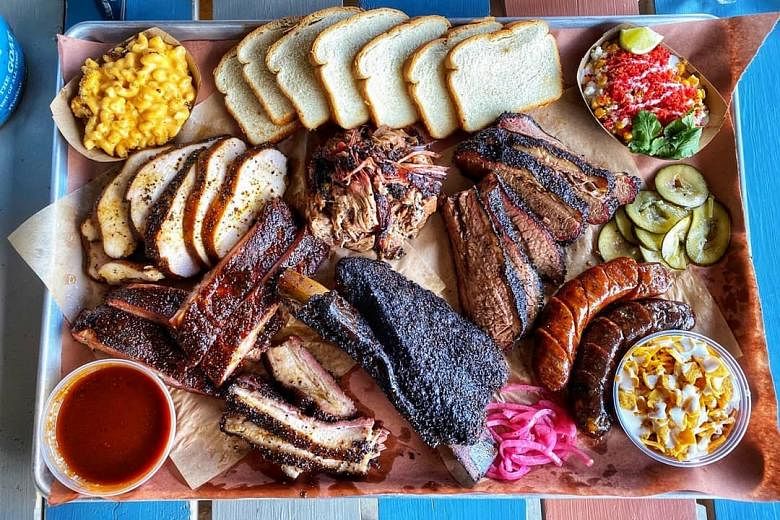Beers on ice and marinated meats ember-roasted to perfection bring summer to life.
With Covid-19 restrictions still in place, travel lovers in Singapore can indulge in a whiff of summery vacations with a hot grill instead.
Barbecue, a technique universally adored, is also a chance for people to relax, whether during a national holiday like Independence Day in the United States or any weekend in Singapore.
Perhaps it is the glow of the flames or the seductively smoky flavour of burning wood - even the coronavirus cannot stop any (socially distanced) celebration at the grill.
I am looking to Japan for a slightly modest BBQ at home, rather than mingling with hundreds of beachgoers in my country, Switzerland.
Like most things in Japan, a minimalist approach is taken at the grill with the much-loved yakitori. Bite-size pieces of chicken, pork and offal, such as liver and tongue, are elegantly basted in a rich soya glaze and served in tiny eateries in every major city and small village in Japan.
A perfect combination with a tall glass of Japanese beer like Yebisu or a Shochu Highball (potato-based alcohol), these skewers of yaki will whisk you to Tokyo where the postponed Summer Olympics will take place this time next year.
While there are a handful of countries like Australia that keep things simple - slap a shrimp on the barbie, anyone? - other cultures take their BBQ very seriously.
Barbecue in the US, for example, is partisan, with many states taking great pride and joy in their unique culture when it comes to firing up the grill. You would never go to North Carolina and tell locals you had the best BBQ in Georgia nor would you talk about Texan pitmasters when in Kansas City.
Sauce or dry-rub? Wood chips or charcoal? Wood fire or smoke? Pork or beef? Neck, shoulder or whole hog?
It is mind-boggling for an Aussie like me who remembers barbecues with her Taiwanese family around Albert Lake in Melbourne. Those treats consisted of simple sausages, garlic-roasted lamb chops and a coriander-and-cabbage Taiwanese noodle salad made by mum.
The Basque Country in Spain is discerning when it comes to barbecuing.
Historians have traced barbecue back to Spain. Apparently, the Spanish travelled to the Caribbean and witnessed indigenous tribes slow-roasting meats over an open fire - formidable and entrancing for first-timers, I imagine.
Since then, barbecue culture has spread like wildfire with chefs even receiving Michelin stars for their finely tuned technique.
I remember Chef Victor Arguinzoniz of Etxebarri in Spain sharing his top tip on how to grill: "The most important ingredient in a barbecue is patience."
And with that, I inspire you to step up the grilling game with these ideas from great BBQ cultures around the world.
• Based in Switzerland, Australia-born Michelle Tchea has authored books on food, wine and travel.
Six popular barbecues around the world
Yakitori in Japan

Salt or soya? Shiso or yuzu? Yebisu or Asahi beer to wash it all down?
Unlike many things in Japan (like ramen), yakitori is a great way to socialise with fellow diners and learn more about Japanese food culture.
Grab a seat at the counter, set aside any apprehension of speaking Japanese and start your yakitori experience by ordering tiny skewers of meat and vegetables.
My top tip is to use your yakitori grill master as your weapon, asking him what he recommends and what drinks to pair for the ultimate experience.
Although widely popular now, yakitori really became mainstream in Japan only in the 1950s with small eateries (yakitori-ya) popping up around train stations to feed hungry and tired businessmen.
Fortunately, they are still popular pitstops for men in suits, though the experience has gone from cheap-and-cheerful-eats to highly popular dining experiences where you can enjoy bite-size pieces of chicken skin (kawa), cartilage (nankotsu) and even chicken butts (ponjiri) which are seasoned with salt (shio) or a slightly thickened sauce (tare).
I remember sitting in a yatai, a street stall, and enjoying an authentic Japanese pastime with the hustle and bustle of Fukuoka city behind me. I did walk away slightly hungry after consuming more than a dozen skewers, but I guess that is what ramen is for, right?
Cowboy steak culture in Argentina
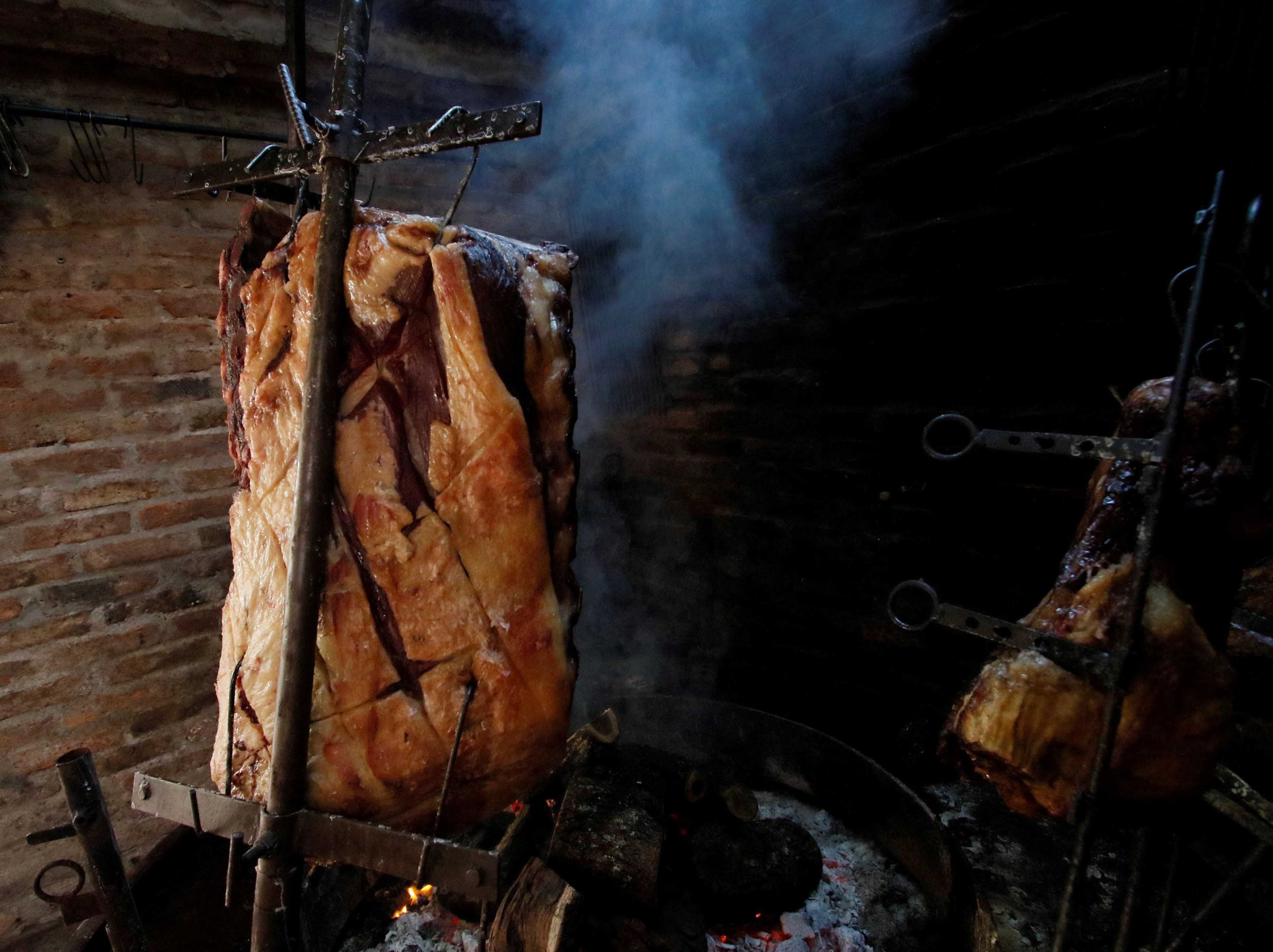
BBQ culture is well and truly part of the national identity of Argentina.
The gauchos or nomadic cowboys, rugged and romantically unruly, are seen as the people who brought BBQ culture to life in Argentina.
There are culinary tales of how the gauchos in the early 15th century would stop work at midday and put meat on the parrilla (Spanish for grill) before going back to work tending cattle.
While cattle farms and ranches in the deep southern parts of Argentina still offer the gaucho experience, people do not have to leave the capital Buenos Aires to experience excellent parrillas (also the name for steakhouses).
There are parrillas to meet everyone's budget. Restaurant Don Julio is seen as the high-end steak experience with excellent cuts of meat, while La Cabrera comes with a more thematic experience led by a celebrity chef.
I have a new favourite place in Argentina's capital - I head to Nuestra Parrilla for a simple steak sandwich when I visit the historical and hipster neighbourhood of San Telmo.
Canta el Gallo is a must-visit too.
Braai, South Africa

South Africans take their summertime grilling so seriously, it has its own terminology known as Braai, which is celebrated on Heritage Day (Sept 24) to mark the start of Braai season.
What I love about the Braai-BBQ culture is that there are some steadfast rules to follow.
If your friends call you in for a "chop 'n dop", it means to bring your own chop (meat) and dop (drinks).
But if you are invited to a "bring and braai", it means you are expected to bring everything except the fire.
Think snacks including authentic dry meats known as biltong. Or dips like snoek pate, which is a creamy smoked pike dip.
All rules aside, BBQs are all about having fun, so do as the locals do: Watch a rugby match on television, let the braai master work his magic and enjoy the aromatic culture of South Africa.
Grill party in Sweden
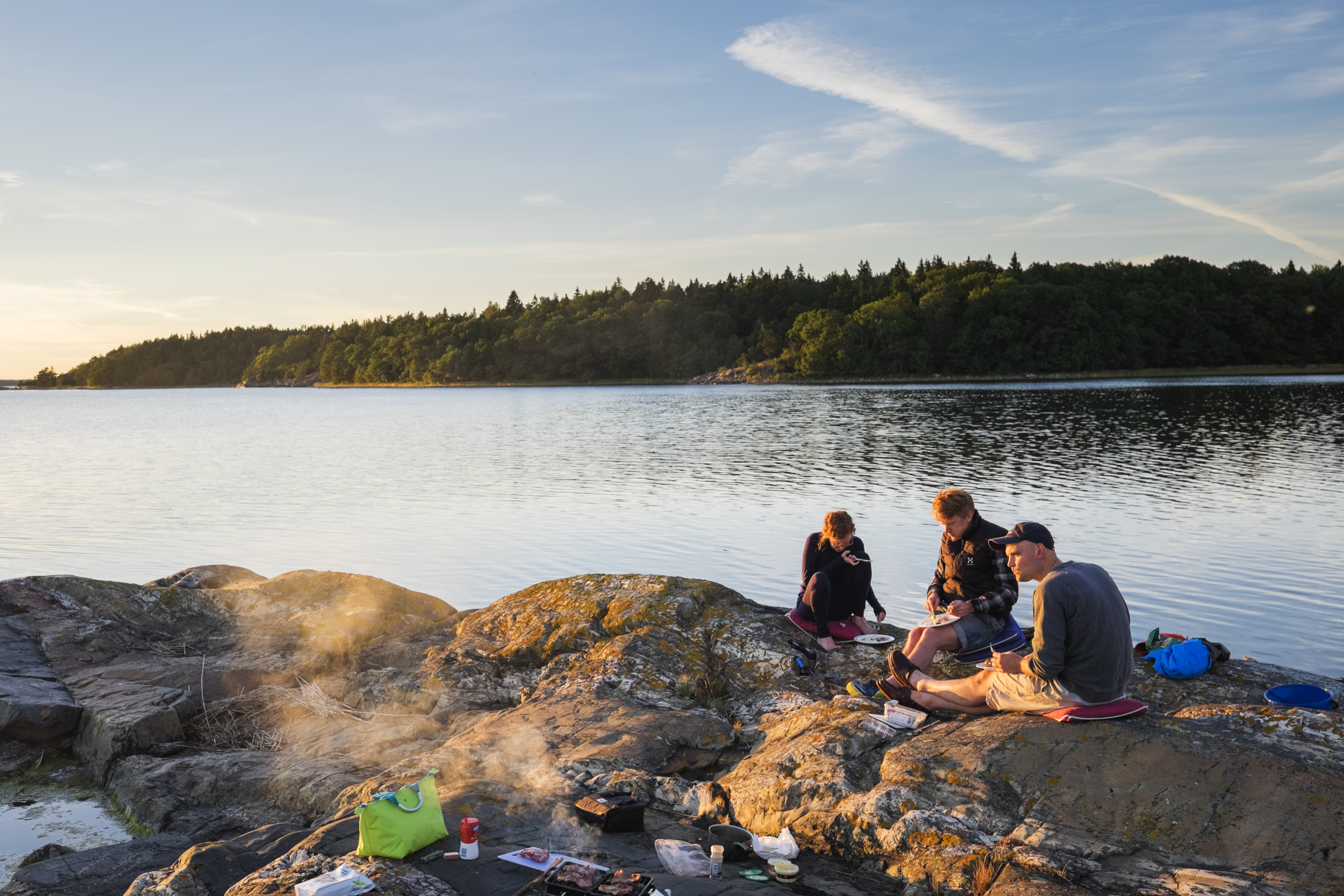
What I love about the Swedes is how they spend a lot of time enjoying life with family and friends, which means spending a lot of time eating and drinking.
At the first sign of spring, BBQ season officially begins for the Swedes.
With the limited period of sunshine and warm weather, you can imagine outdoor BBQs taking place with lots of feasting.
A good friend, celebrity chef Niklas Ekstedt, has a restaurant in Stockholm entirely dedicated to fire. No griddle, no stove - just natural heat, soot, ash and smoke.
Inspired by nature, he went back to his childhood memories of building a fire pit and barbecuing with his family in the woods near Jamtland (northern Sweden) to produce one of the hottest restaurants in Stockholm.
Forget plain sausages - the Swedish are true gourmets and roast anything from whole salmons to oysters on the half-shell and, at restaurant Ekstedt, you can sample reindeer saddle and even charcoal cream.
Sausages in Switzerland
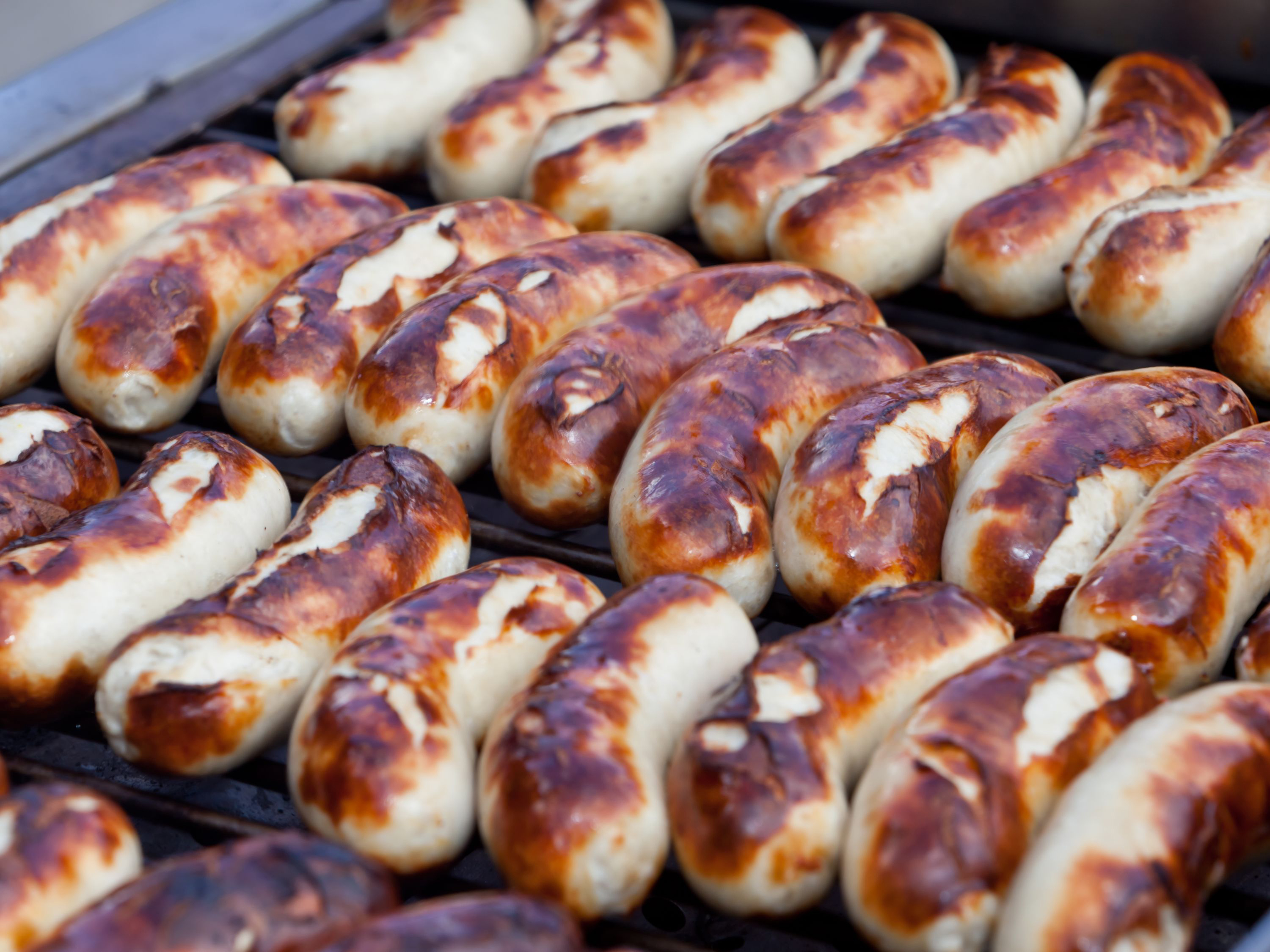
Did you know there are more than 400 types of sausages in Switzerland? A country known for cheese and luscious chocolate also has a rich BBQ culture.
While the Swiss have fondue (melted cheese) during the winter, their summer is marked with locals barbecuing by the lake.
For those who want to enjoy both cheese and sausage in one culinary trip, there is Lake Gruyere in Fribourg.
While the Grand Tour of Switzerland takes you to 22 lakes, five alpine passes and a 1,600km scenic route of glaciers, mountain villages and crystal lakes, you could easily go on a Sausage Grand Tour since all Swiss cantons have a sausage to their name.
My favourite is the St Gallen sausage, which is rooted in history and known as the queen of sausages.
To me, there is nothing better than grabbing a sausage from a vendor in the old town, walking over to the Unesco World Heritage Site, Abbey of St Gallen, and enjoying a bit of history using all my senses.
Leaf-wrapped parcels in Tahiti
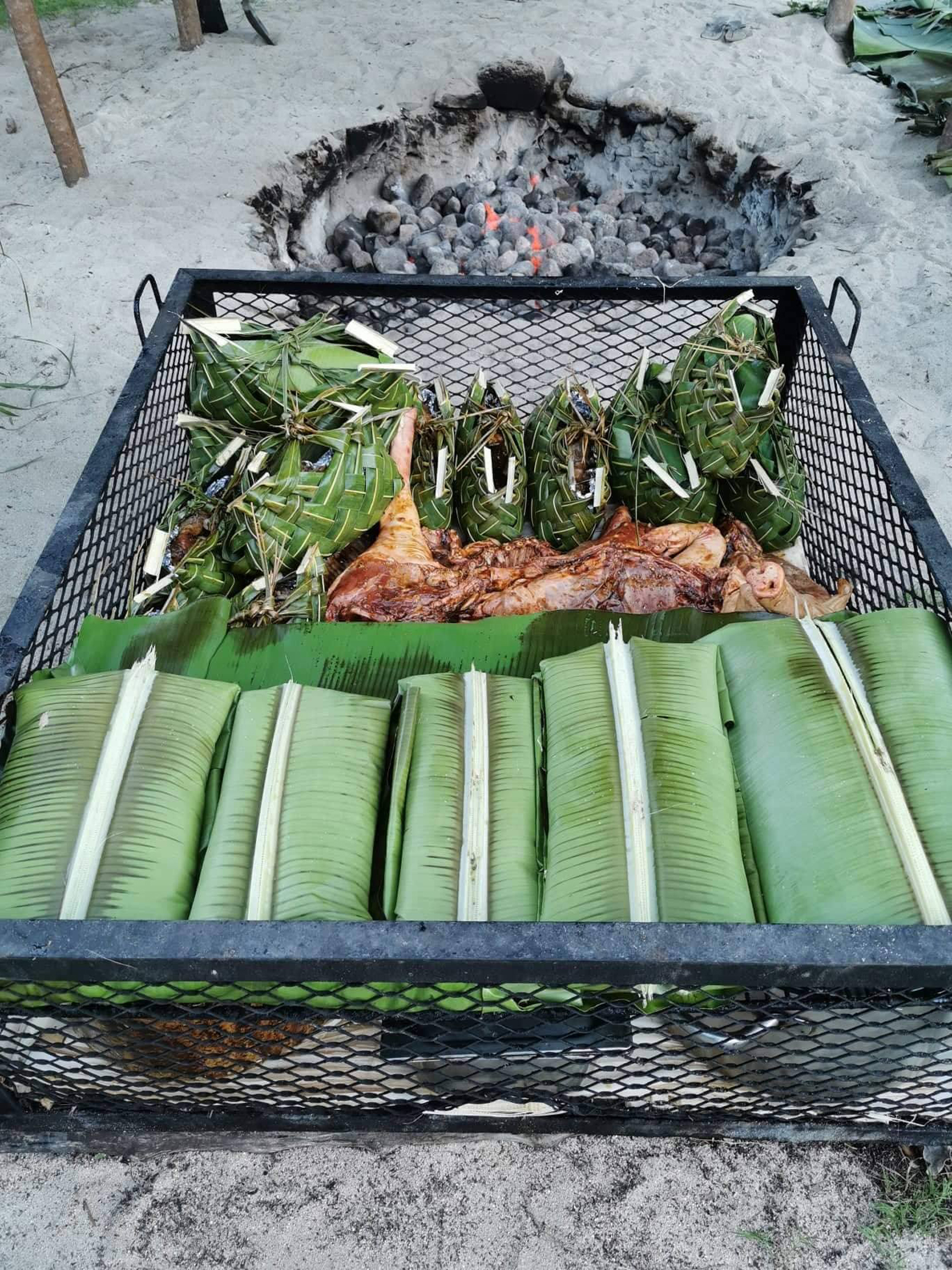
Barbecuing is very much a family affair in Tahiti.
The islands of Tahiti have a traditional in-ground oven called ahima'a. Ahi means fire and ma'a means food.
The ahima'a is typically served for celebrations, family gatherings or Sunday meals, with the banana tree playing a large role in the success of an authentic Tahitian BBQ.
To prepare an ahima'a, a hole is dug in the ground with volcanic stones placed on the bottom and a layer of wood and coconut husks on top.
Fish, shrimp, wild pig and local fruit like breadfruit and taro are individually wrapped in banana leaves and the "oven" is covered with more banana and purau (hibiscus) leaves and layers of earth, before being cooked for hours.
The food is always blessed with a prayer before eating and followed by traditional songs, families whipping out the ukulele and Tahitian snacks on the beach.

